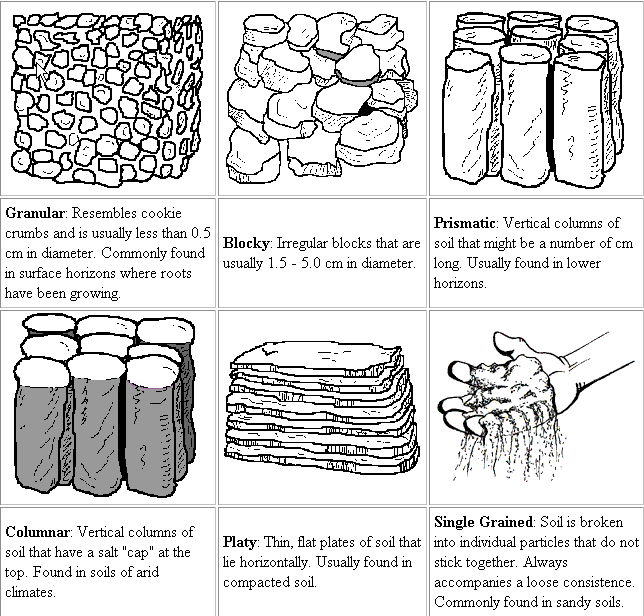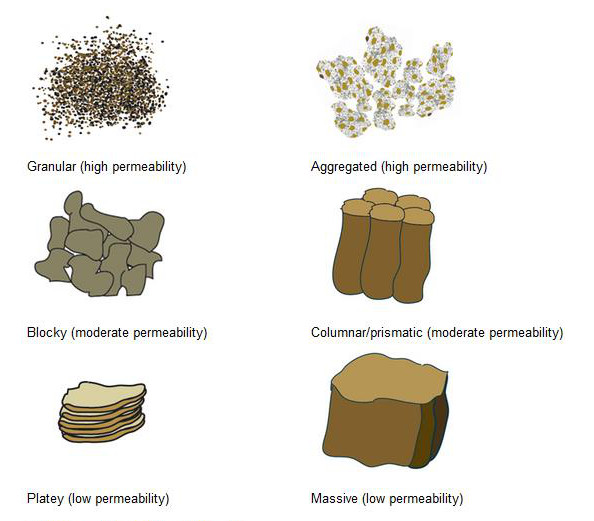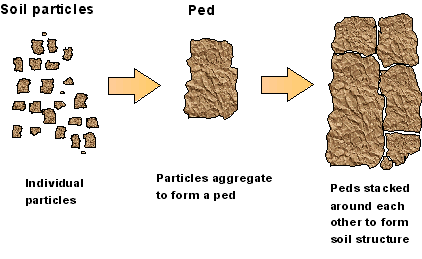Soil structure
The soil structure (also: soil structure ) is a term of soil science and refers to the spatial arrangement of the solid soil components. The entire volume of soil the soil matrix is divided into the volume of the solid matter in the soil and in the pore volume.
This division influenced the soil and air balance, the root growth, nutrient availability and similar pedological and plant physiological properties. In general, the coarser the structure of a soil and / or more densely packed structure of the individual unit is, the more unfavorable are the soil properties.
Coherent structure
Aggregate structure
Segregatgefüge
Structure forms
The following structural forms are macroscopically well addressed by the cohesion of the soil particles, as well as on the degree of cementation or secretion:
- Primary structure (also called " primary structure " ), neither biological, nor chemical processes, a structure has been created. Single grain structure (also called " elementary structure " ) - In sands and gravels, with freshly deposited silt and mud flats and tidal coasts, the primary without cohesion are;
- Coherent structure (also called " shell structure " ) - clay / silt / clay deposits: Are held together by cohesive forces and form an unstructured mass;
- Building structure in which groups of soil particles by physical or soil biological processes combine to create recognizable, heterogeneous structures. Aggregate structure (also called " crumb structure " ) - aggregation of soil particles - causes of this are usually soil biological processes; Stabilization of aggregates by supporting substances such as CaCO3 (as Kittgefüge ) - Example: humic garden soil;
- Segregatgefüge (also called " structural separation " ) caused by desiccation and shrinkage processes of fine-grained Kohärentstrukturen as Isolation - example: loamy subsoil;
The structures of the Segregatgefüge be the size and shape further divided into:
- Macro coarse microstructure Rißgefüge
- Layer structure
- Polyedergefüge angular, polyhedral, Grobpolyeder diameter > 10 mm; Feinpolyeder diameter 1 - 10 mm;
- Macro microstructure Pillar structure rounded, vertical axis > Horizontal axis;
- Subpolyedergefüge
- Prismatic structure with sharp edges, vertical axis > Horizontal axis;
- Plate structure horizontal axis > vertical axis; as a result of pressures and thus signs of compression, for example, among lanes or plow pans
- Structure fragments
Furthermore there are microstructural forms, which are determined in thin sections under the microscope.










